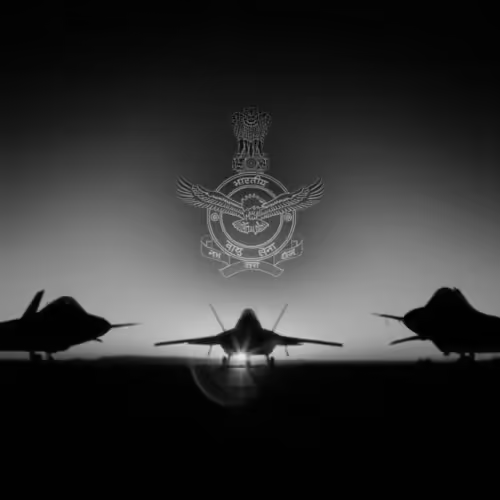Air Chief Marshal VR Chaudhari delivers the inaugural address for the 15th Jumbo Majumdar International Seminar
27 March 2024
Air Chief Marshal VR Chaudhari, Chief of the Air Staff delivered the inaugural address for the 15th Jumbo Majumdar International Seminar organised by the Centre for Air Power Studies at the Air Force Auditorium, Subroto Park, New Delhi. The theme for this edition of the seminar was Aerospace Power in Future Conflicts. The speech of the CAS is as follows.
ADDRESS BY THE CAS
15th JUMBO MAJUMDAR INTERNATIONAL SEMINAR
AEROSPACE POWER IN FUTURE CONFLICTS
ON 27 MAR 24
Former Chiefs, Air Mshl Anil Chopra, DG CAPS, esteemed veterans, distinguished panellists, participants of the seminar, members of the media, ladies and gentlemen. Good Morning to all of you. As part of the 15th ‘Jumbo’ Majumdar International Seminar, it is indeed a privilege for me to deliver the Inaugural Address and share my thoughts on a topic that is extremely relevant not only for practitioners of air power but also the entire strategic community.
This series of seminars in memory of Wg Cdr KK Majumdar DFC & Bar, is indeed a befitting tribute to the iconic IAF officer who was instrumental in laying a solid foundation for the Indian Air Force and we are extremely proud of his achievements. We shall forever be indebted to him for his vision and direction which has helped transform the IAF into a formidable force as it stands today.
Through the annals of human history, the skies have often been regarded as realms of wonder and exploration, where dreams take flight and boundaries dissolve in the vast blue expanse. Yet, beneath this veneer of calmness lies a domain fraught with competition, where the contest for aerial superiority has shaped the destiny of many nations and decided the outcome of many wars. As we navigate these uncharted
skies, air power being a key component of national power would undoubtedly play a pivotal role and also serve as a symbol of national strength, a tool for peace and cooperation.
Over the last few decades, understanding of the military operational environment has significantly transformed from primarily a force, time and space driven battlefield to an arrangement of systems capable of simultaneous and independent operations across multiple domains. We all need to acknowledge that the wars of the future will be fought differently.
Future conflicts will be characterised by a blend of simultaneous application of kinetic and non-kinetic forces, high levels of battlespace transparency, multi-domain operations, high degree of precision, enhanced lethality, a compressed sensor-to-shooter cycle and intense media scrutiny. Coupled with that is the convergence of niche technology like AI, big data, additive manufacturing, block chain and quantum communication making existing weapons and inventories redundant. To be able to fight effectively in such an environment, there is a need to reimagine, realign and reform conventional war fighting ways and means.
Evolution of aerospace power is not merely a matter of technological prowess but also a testament to the ingenuity and adaptability of human innovation in the face of emerging threats and challenges. Space has emerged as a critical domain for conduct of military operations, wherein, seamless communication, navigation and surveillance capabilities would enhance survivability of modern military forces. As nations increasingly rely on space-based assets for building strategic advantage, militarization and weaponisation of space has become an inevitable reality.
Air and space control along with denial capabilities will prove to be decisive for furtherance of all operations. For that to happen,
we would need to gain and maintain not only information superiority but also decision superiority. Emerging technologies like CMOS (complementary metal oxide semiconductor) sensors, smart decision support matrices, manned-unmanned teaming and robust and redundant C2 networks are critical capabilities that need to be developed.
When we talk of aerospace power in future conflicts, one very important element is the design, development and production of the next generation of fighter aircraft. I am aware that there are many discussions being held on the relevance of manned aircraft in the future. In my opinion, reliance solely on unmanned aircraft is a little farfetched. The next step in development of air power would be man and unmanned teaming. The CATS programme and other such initiatives will go a long way in realizing this capability. Technology like pure stealth, super cruise technology, cross domain integration, advanced long range precision weapons, counter stealth technology, enhanced electronic warfare for full spectrum ops and the capability to deliver a wide array of weapons are some key constituents of fifth and sixth generation aircraft.
Another myth that needs to be broken is sustainability of a small number of modern aircraft in one’s arsenal. A small fleet would have its own share of maintenance challenges negatively affecting aircraft readiness and thus the availability of the platforms for operations. Reduction in aircraft availability would contest numerical depth, limiting the operational capacity of some air forces and the missions they could support. This has become known as ‘boutique style’ capability, where small fleets of niche, high-end capabilities risk becoming too stretched to generate meaningful effects
.
Attributes of high speed, reduced response time, long reach, increased mobility, technological intensity, precision fire power, shock effect, ability to operate across domains, and network centric operations have made aerospace power a formidable component of our nation’s military might. Balakot like operations have shown that, given the political will, aerospace power can be effectively carried out beyond enemy lines, in a no-war, no-peace scenario, under a nuclear overhang without escalating into a full-blown conflict. Ongoing conflicts across the globe have brought out significant lessons for nations in general and air power in particular. Fora such as this are crucial towards developing a better understanding of the nuances of air power application in modern battlespaces.
The future of warfare will always be a complex tapestry woven with evolving technologies, shifting alliances and the ever-present threat of conflict. Within this tapestry, aerospace power will always remain vital to conduct of all military operations.
I am confident that today’s seminar will serve as a platform for all present here to delve deeper into the potential applications, challenges and transformative impact of aerospace capabilities on the battlespace of tomorrow. The wide swathe of topics to be discussed during the seminar are testimony to the mammoth role that air power will play in the future and therefore as custodians of national security, it is imperative that all of us train for certainty and educate for uncertainty. My compliments to CAPS for organizing this seminar in a befitting manner as a tribute to Jumbo Majumdar and his legacy.











Add Comment